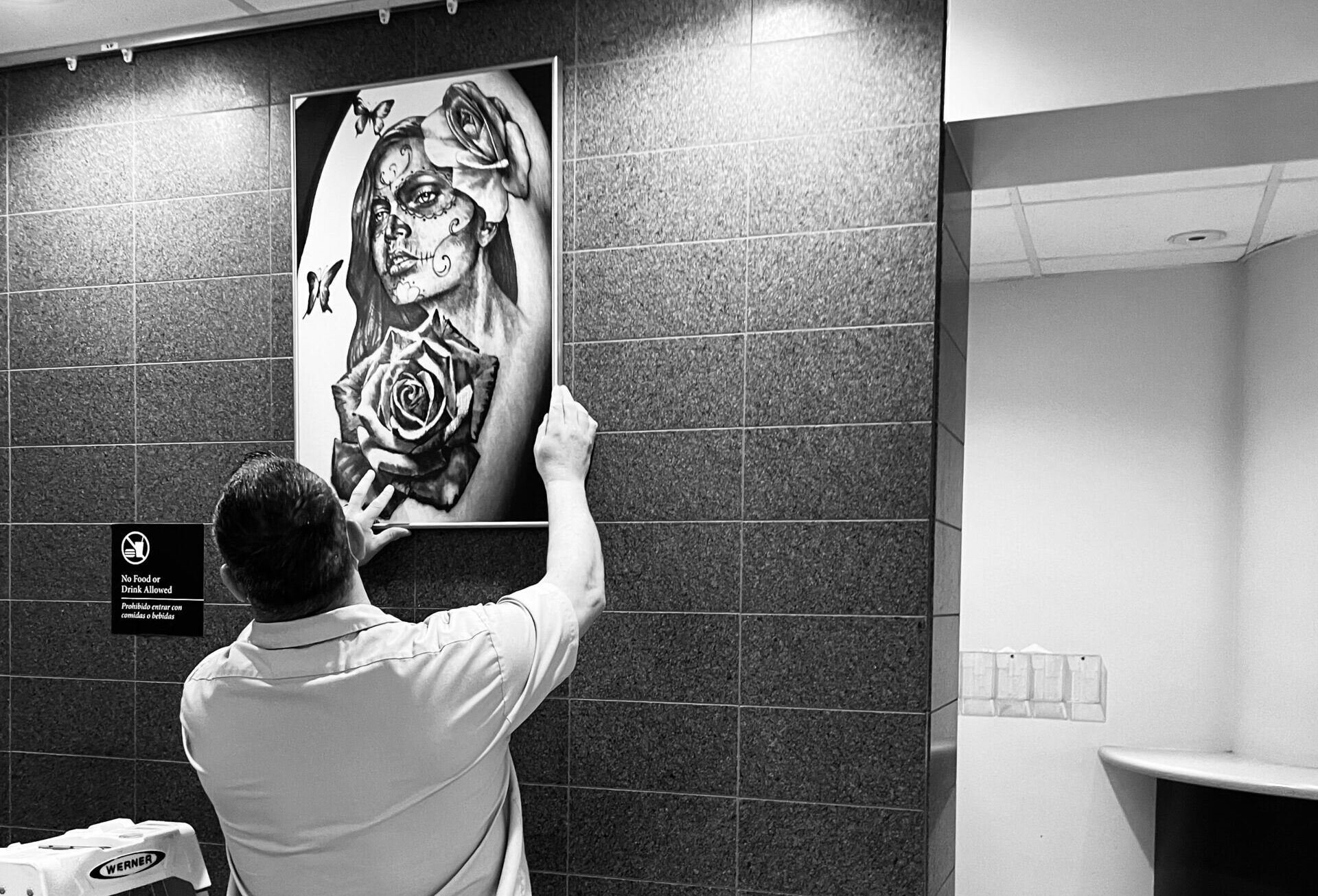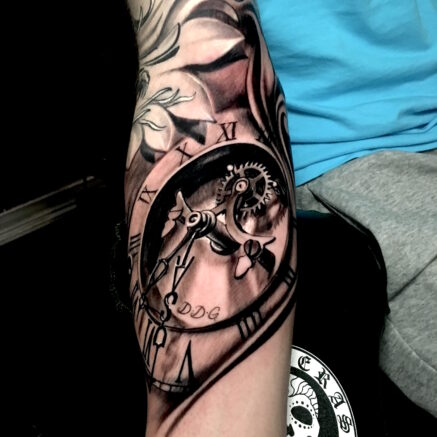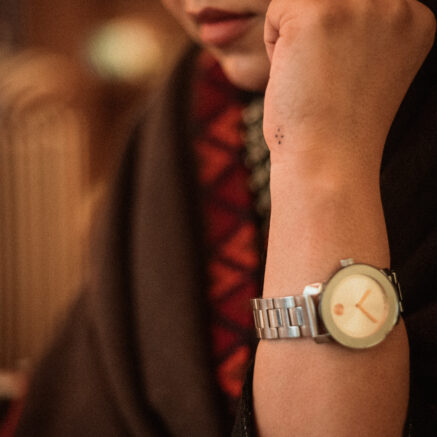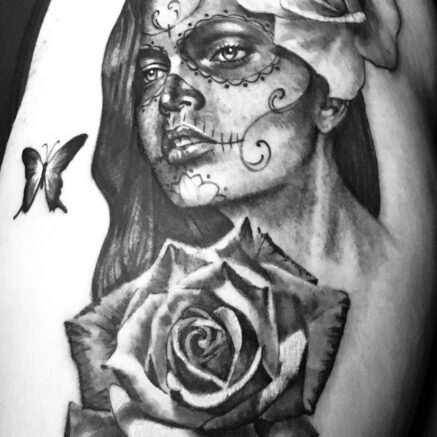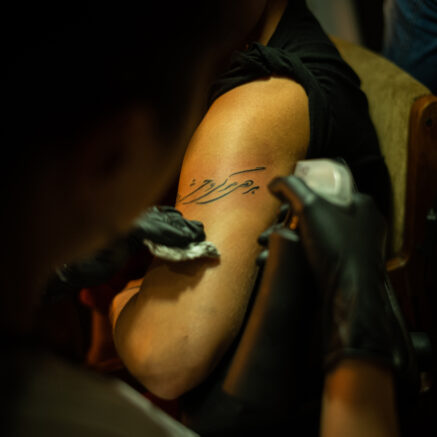Mayan Warrior
The predecessor of black-and-grey and hyperrealism tattooing, Chicano style is a broad style which encompasses Mexican experience and focuses on realism. The Chicano style originates with the Pachuco gang culture of the 1940s where a cross between the thumb and index finger was a sign of membership. The tattoo style developed in the prison system where India ink was the only available material–hence the reliance on black and grey. Larger tattoos, and tattoos in particularly painful areas like the throat, were signs of machismo. While gang symbolism was a central aspect of the style with themes like “smile now, cry later”, low riders, cowgirls, and bold flowing script, there was also heavy use of Christian symbolism as well as an exploration of pre-Hispanic Mexican culture. As tattoos and tattooing gained mainstream popularity, Chicano style tattooing expanded beyond the gang and prison setting; however, it still heavily relies on black and grey ink and a high degree of realism.
For some, tattooing has provided an opportunity to connect with one’s ancestors, as is the case with the Mayan warrior depicted here. Watch a video.

Edgar Calaveras, Mayan warrior, 2021. Digital Photograph. ©Edgar Calaveras. All rights reserved.

